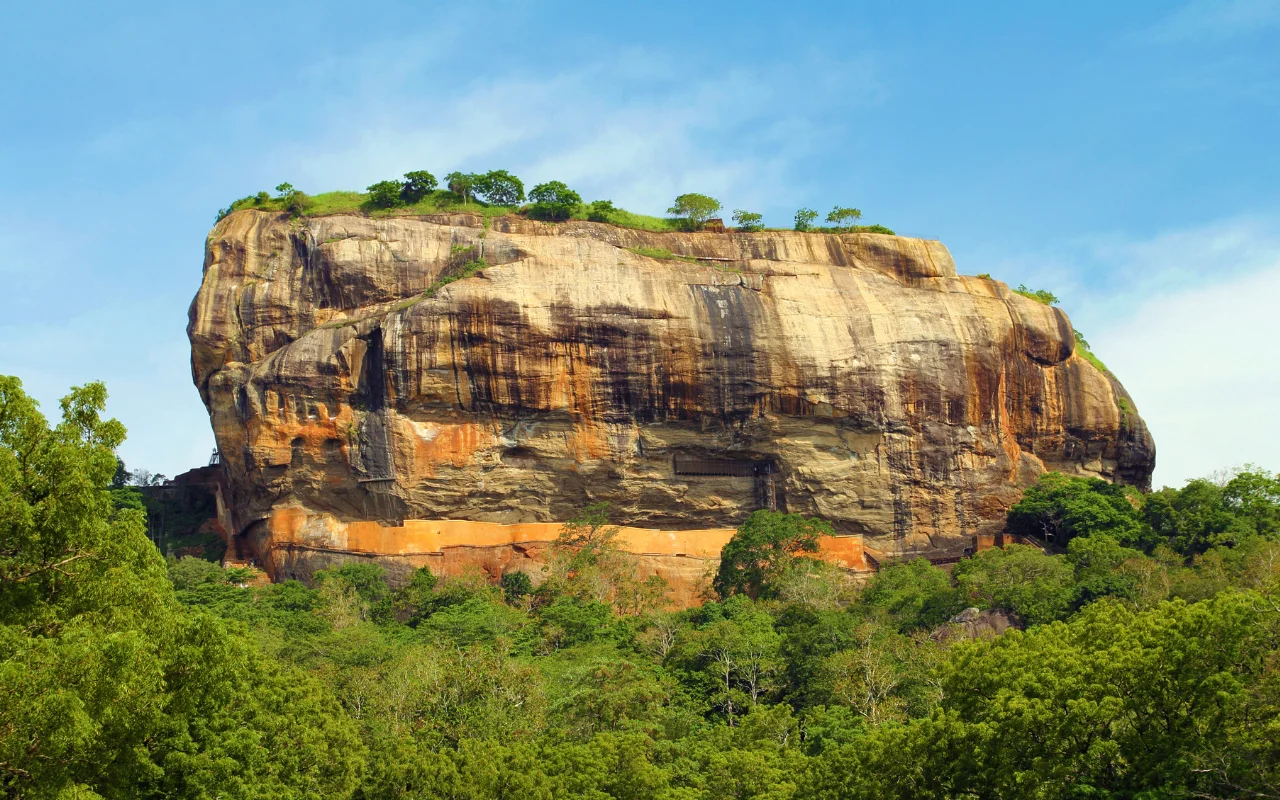Address
304 North Cardinal St.
Dorchester Center, MA 02124
Work Hours
Monday to Friday: 7AM - 7PM
Weekend: 10AM - 5PM
Address
304 North Cardinal St.
Dorchester Center, MA 02124
Work Hours
Monday to Friday: 7AM - 7PM
Weekend: 10AM - 5PM

Soaring majestically from the emerald plains of Sri Lanka, Sigiriya, also known as the Lion Rock Fortress, beckons with an air of mystery and grandeur. This UNESCO World Heritage Site is a captivating testament to the architectural and artistic brilliance of Sri Lanka’s ancient civilization. From its awe-inspiring cliff face to the captivating frescoes and intricate water features, Sigiriya offers an unforgettable experience for history buffs, nature enthusiasts, and adventurous travelers alike.
Sigiriya’s origins are shrouded in legend. According to the ancient Sri Lankan chronicle, the Culavamsa, King Kashyapa (477-495 AD) chose this colossal rock pillar, rising nearly 200 meters (590 ft) above the surrounding plains, to establish his new capital. The king, having usurped the throne from his rightful heir, sought refuge atop this impregnable fortress. However, archaeological evidence suggests the site may have been a significant religious and urban center long before Kashyapa’s reign.
The ascent to the summit of Sigiriya is an adventure in itself. The initial climb takes you through beautifully landscaped gardens, with water features and pathways adorned with sculptures. Brace yourself for the iconic Lion Staircase, a seemingly never-ending stairway carved into the rock face. Flanked by the colossal paws of a lion, once a complete statue, this section signifies the entrance to the royal palace complex above.
Halfway up the rock face, a sheltered alcove reveals a breathtaking sight – the Sigiriya Frescoes. These vibrant paintings, believed to date back to the 5th century, depict celestial maidens adorned with elaborate jewelry and hairstyles. The vivid colors and lifelike expressions of these figures continue to intrigue and inspire. Theories abound regarding the identity of these women, with some suggesting they represent apsaras (celestial nymphs) or members of the royal court.
The final ascent involves a series of metal ladders and staircases, culminating in the summit plateau. Here, amidst the ruins of the once-grand palace complex, you’ll be rewarded with panoramic vistas that stretch across the verdant landscape.
Imagine King Kashyapa surveying his dominion from this very spot. Explore the remnants of the citadel, including cisterns carved into the rock to collect rainwater, and ponder the engineering marvel that sustained a kingdom atop this monolithic rock.
The wonders of Sigiriya extend beyond the summit. At the foot of the rock lie the sprawling remains of the outer city, showcasing the sophistication of urban planning in ancient Sri Lanka. Explore the moats, ramparts, and pleasure gardens, remnants of a bygone era.
Sigiriya continues to spark the imagination of archaeologists and historians. The true purpose of the mirror wall, a highly polished rock face that once reflected light, remains a subject of debate. Theories range from a practical function of signaling to a more symbolic purpose associated with Sri Lankan royalty.
A visit to Sigiriya is a journey through time. It’s a chance to stand where kings once walked, marvel at the artistic legacy of a bygone era, and appreciate the ingenuity of ancient Sri Lankan civilization. As you descend from this awe-inspiring monument, take a moment to reflect on the enduring power of history and the captivating beauty of Sri Lanka.